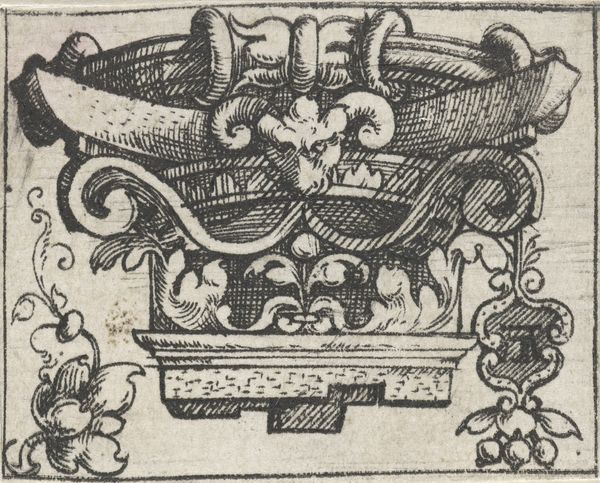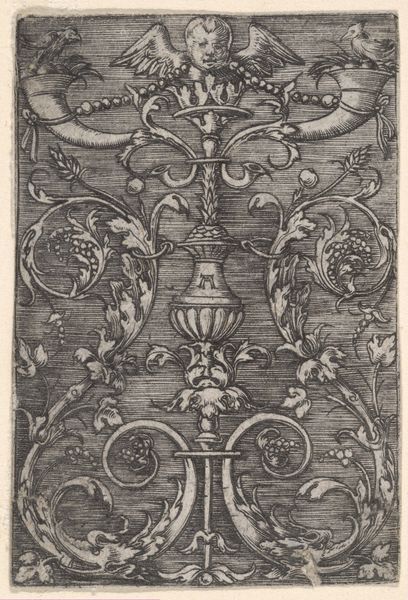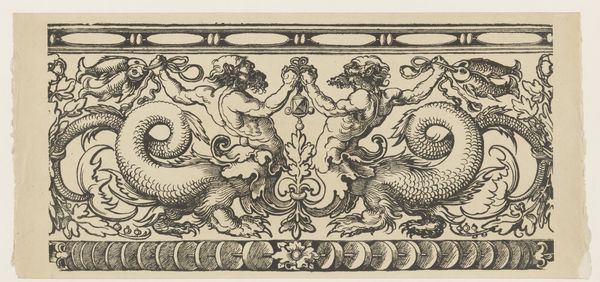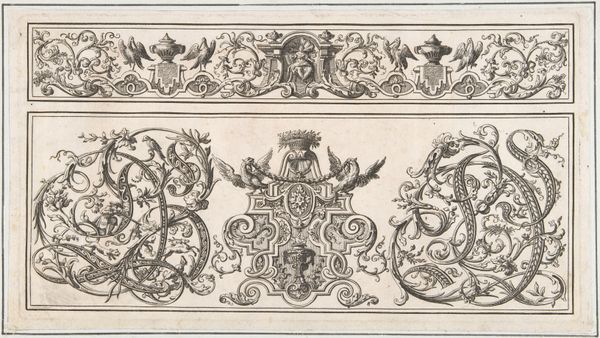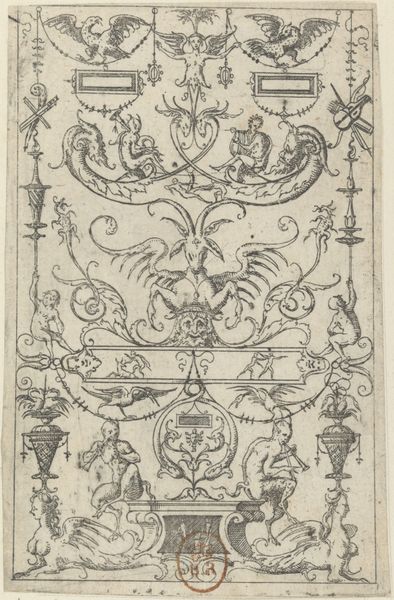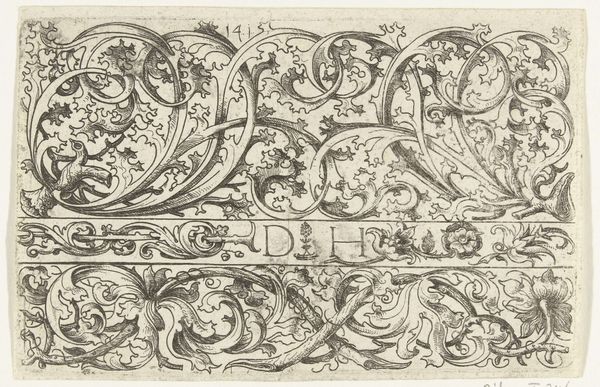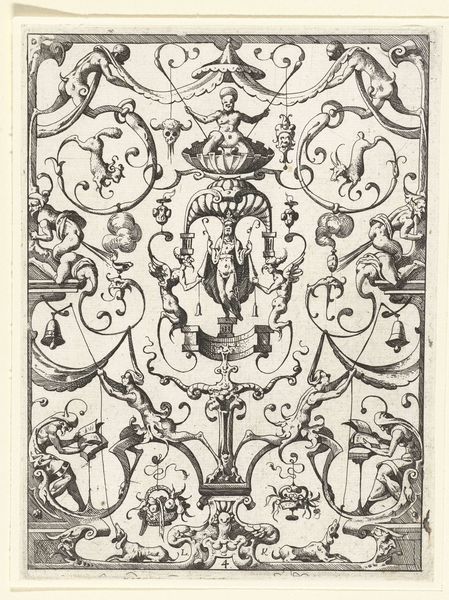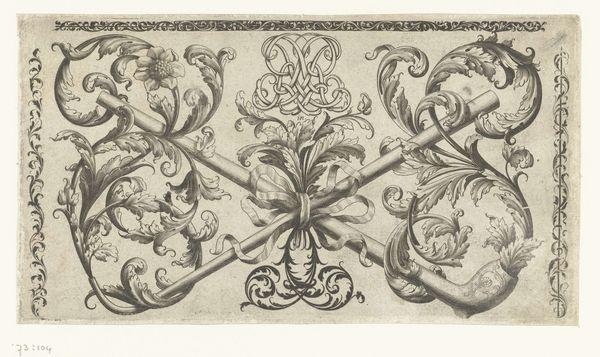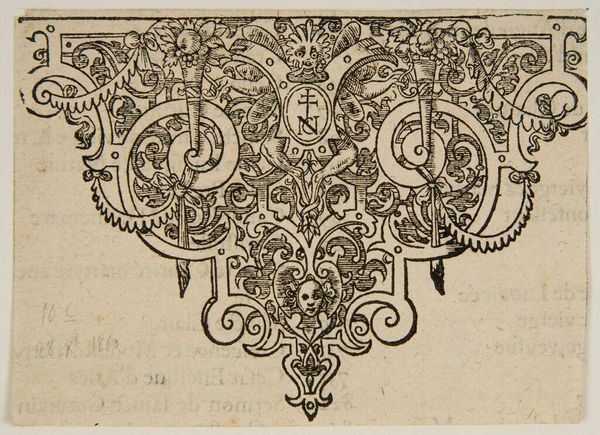
drawing, ornament, print, ink, engraving
#
drawing
#
ornament
#
pen drawing
# print
#
form
#
11_renaissance
#
ink
#
geometric
#
line
#
history-painting
#
northern-renaissance
#
engraving
Dimensions: height 28 mm, width 84 mm
Copyright: Rijks Museum: Open Domain
Editor: This drawing, "Fries met een vaas tussen twee putti en bladranken", was made around 1529 by an anonymous artist. It's an ink drawing or print that shows a vase flanked by putti and leafy scrolls. The whole design strikes me as meticulously balanced, but the putti also add an element of lively animation. What elements stand out to you most? Curator: Indeed, the work presents a fascinating study in contrasts. I'm drawn particularly to the artist's use of line. Note the way it defines form, creates texture, and delineates the various planes within the composition. It's a linear style reminiscent of the Northern Renaissance. The very precise lines contribute to a flattened picture plane that's typical of the period. Editor: I see what you mean about the use of line. The artist has a keen sense for decorative flair, too. But the subject also speaks volumes. Why fuse the classical vase motif with putti and foliage? What purpose do those choices have for the viewer? Curator: An intriguing question. What structural relationship exists between these forms? Could it be an allegorical connection to the Renaissance's rediscovery of classical forms with its own embrace of exuberant growth? Consider the composition. The putti and foliage actively frame the vase, directing our gaze and emphasizing its significance as the piece's focal point. Does the line work to create spatial depth or flatten it even further? Editor: So you’re suggesting that the way the lines are rendered contributes to the symbolism embedded in this historical artwork? It gives me a different perspective to think about. Curator: Precisely. Analyzing these structural components allows us to delve deeper into the work's meaning and appreciate the skill with which the artist integrates disparate elements into a cohesive whole. This framework reveals layers of symbolism and artistic intent that may have otherwise gone unnoticed.
Comments
No comments
Be the first to comment and join the conversation on the ultimate creative platform.
